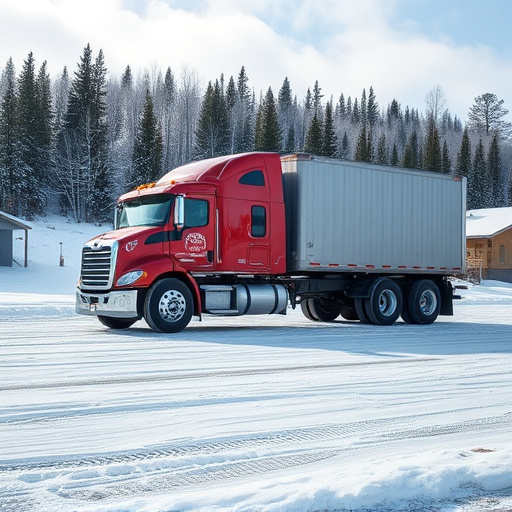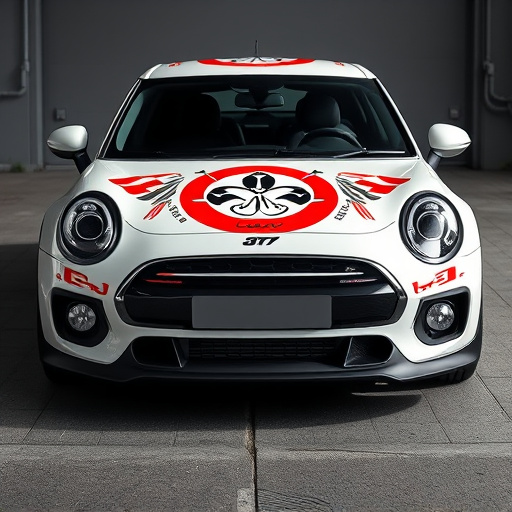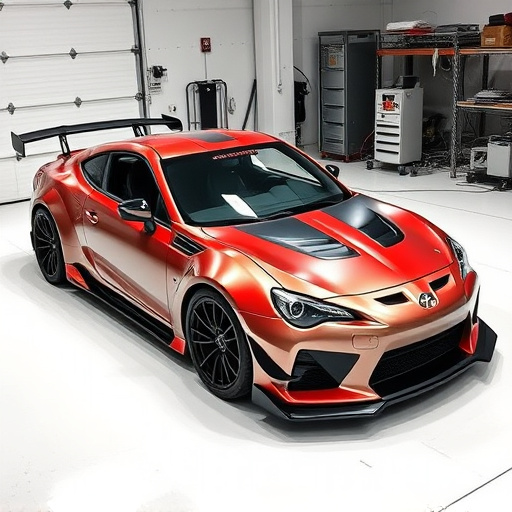Paint Protection Film: Enhancing Visual Clarity and Safety
Paint Protection Film (PPF) is a cutting-edge automotive technology that not only enhances visual ap…….
Welcome to an in-depth exploration of paint protection film (PPF), a revolutionary material that has transformed the automotive industry and beyond. This article aims to guide you through the various facets of PPF, from its basic principles to its profound global impact. By the end, readers will grasp why this seemingly simple film is a game-changer in surface protection. We’ll uncover its history, technological marvels, economic implications, and future potential, providing a holistic understanding of its role in modern times.
Paint protection film, often referred to as clear bra or paint shield, is a thin, durable polymeric membrane designed to protect the exterior finish of vehicles, primarily cars and motorcycles. It is a highly specialized product that offers a protective layer between the vehicle’s paintwork and environmental factors like dirt, scratches, UV radiation, and chemical contaminants.
The core components of PPF typically include:
The concept of PPF emerged in the 1960s when researchers sought ways to protect aircraft surfaces from environmental corrosion. Over time, the technology evolved, finding its way into the automotive sector in the late 20th century. Early versions were thick and rigid, but advancements in polymer science led to the development of thin, flexible films that could conform to vehicle surfaces without compromising aesthetics or performance.
Paint protection film has become a global phenomenon, with widespread adoption across North America, Europe, and Asia Pacific regions. Its popularity surged due to the increasing demand for vehicle customization, maintenance, and protection against the elements. According to a 2022 market report by Fortune Business Insights, the global PPF market size was valued at USD 5.4 billion in 2021 and is projected to grow at a CAGR of 7.2% from 2022 to 2030.
While North America and Europe have led the way, emerging markets like India, Brazil, and Southeast Asia are witnessing significant growth in PPF adoption. Factors such as increasing vehicle ownership, rising disposable incomes, and a growing preference for luxury and premium vehicles drive this expansion. For instance, China’s automotive market, the largest in the world, is expected to contribute substantially to the global PPF market’s growth due to its massive fleet of vehicles and stringent environmental standards.
The global PPF market operates as a highly competitive space with several major players, each offering unique product variations to cater to diverse customer needs. Major investments in research and development have led to advancements in film composition, application methods, and overall performance, driving market growth.
PPF’s cost varies based on its quality, thickness, and additional features. Typically, it ranges from USD 50 to USD 300 per square foot, with premium brands offering enhanced protection and customization options at higher price points. Many companies employ pricing strategies that reflect the film’s quality, regional demand, and target customer demographics.
One of the most significant drivers of PPF evolution is technological innovation in polymer chemistry. Researchers have developed advanced polymers with enhanced mechanical properties, improved UV resistance, and self-cleaning capabilities. For instance, some modern PPFs incorporate nano-particles that repel water, dirt, and stains, ensuring a longer-lasting, easier-to-maintain finish.
The digital revolution has transformed the way PPF is applied and designed. Digital cutting tools enable precise pattern creation, while 3D printing allows for custom-shaped films to fit unique vehicle contours. Additionally, graphic design software gives customers the power to create personalized patterns, logos, and colors, elevating PPF from a protective layer to an art form.
A groundbreaking development is self-healing PPF, inspired by nature’s ability to repair itself. These films contain microcapsules filled with UV-curable resin that, when damaged, harden to fill and conceal scratches. This technology promises to reduce the need for frequent touch-ups and repaints, significantly extending the film’s lifespan and lowering maintenance costs.
PPF manufacturers must adhere to stringent environmental and safety regulations, especially concerning the emission of volatile organic compounds (VOCs). Many countries have implemented strict guidelines for automotive coatings, including PPF, to minimize air pollution and promote sustainable practices. For example, the European Union’s REACH (Registration, Evaluation, Authorization, and Restriction of Chemicals) regulation requires manufacturers to demonstrate the safe use of chemicals in PPF formulations.
To ensure quality and safety, PPF products undergo rigorous testing and certification processes. Organizations like Underwriters Laboratories (UL) and Intertek provide certifications for various aspects, including fire resistance, impact strength, and UV stability. These certifications build consumer trust and guarantee a certain level of performance.
The competitive nature of the PPF market has led to intellectual property disputes, with companies protecting their unique formulations and application methods through patents. This legal landscape encourages innovation but also poses challenges for new entrants into the market.
A premium luxury car manufacturer faced the challenge of protecting its distinctive exterior designs from environmental damage while maintaining the vehicles’ exclusivity and perceived prestige. They partnered with a PPF provider to develop a custom film that replicated the car’s unique paint finishes, ensuring protection without compromising aesthetics. The result was a satisfied customer base and reduced repainting costs for the automaker.
A major rental car company sought an affordable yet durable solution to protect its vast fleet of vehicles from dents, scratches, and environmental damage. By implementing PPF across their vehicle lineup, they achieved significant cost savings on maintenance and repainting. The film’s self-cleaning properties also reduced the frequency of vehicle washes, further lowering operational expenses.
A custom vehicle builder known for its avant-garde designs wanted to offer customers a unique protective solution that complements their creative expressions. They collaborated with PPF manufacturers to create specialized films with translucent patterns and vibrant colors, allowing owners to showcase their vehicles’ artistic facets while keeping the paintwork intact.
Paint protection film has evolved from a niche product to a critical component in the global automotive and transportation landscape. Its ability to safeguard vehicles’ paintwork, enhance aesthetics, and reduce maintenance costs is undeniable. As technology advances and market trends evolve, PPF will continue to play a pivotal role in various industries. By embracing innovation, addressing challenges, and staying attuned to consumer demands, this remarkable material will leave its indelible mark on surface protection for years to come.
Q: How often should I apply PPF?
A: The frequency depends on several factors, including driving habits, environmental conditions, and the film’s quality. Most high-quality PPFs can last 3-5 years before needing replacement or reapplication.
Q: Can PPF be installed on any vehicle?
A: While PPF is adaptable, certain specialized applications may require custom-cut films. Complex contours, unique body shapes, or heavily customized vehicles might need tailored solutions, which can increase costs.
Q: Is PPF environmentally friendly?
A: Modern PPF formulations are designed with sustainability in mind, using eco-friendly materials and reducing VOC emissions. However, like any product, its environmental impact depends on production processes and end-of-life disposal practices.
Q: Can PPF protect against bird droppings and bug splatter?
A: Absolutely! One of the primary benefits of PPF is its ability to repel water and prevent stains, which includes protecting against bird droppings and bug splatter. This feature ensures that vehicles remain pristine even under harsh environmental conditions.
Q: How does PPF differ from clear coat?
A: Clear coat is a top layer of paint designed to protect the base color, while PPF acts as a protective barrier between the vehicle’s paintwork and external elements. PPF offers more comprehensive protection, including UV resistance, scratch prevention, and impact absorption.

Paint Protection Film (PPF) is a cutting-edge automotive technology that not only enhances visual ap…….

Paint Protection Film (PPF) is a game-changer for vehicle owners, offering superior protection again…….

Paint Protection Film (PPF) is a clear, durable polymer barrier that shields vehicle paintwork from…….